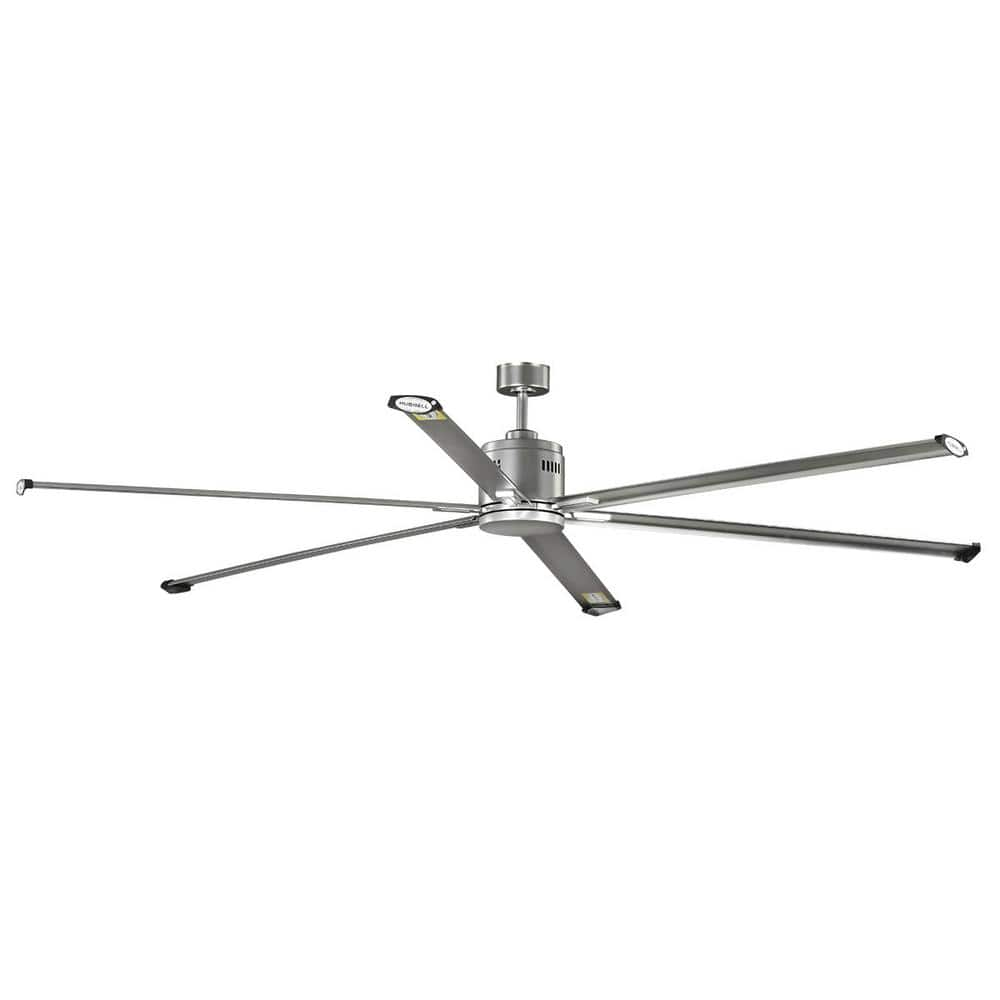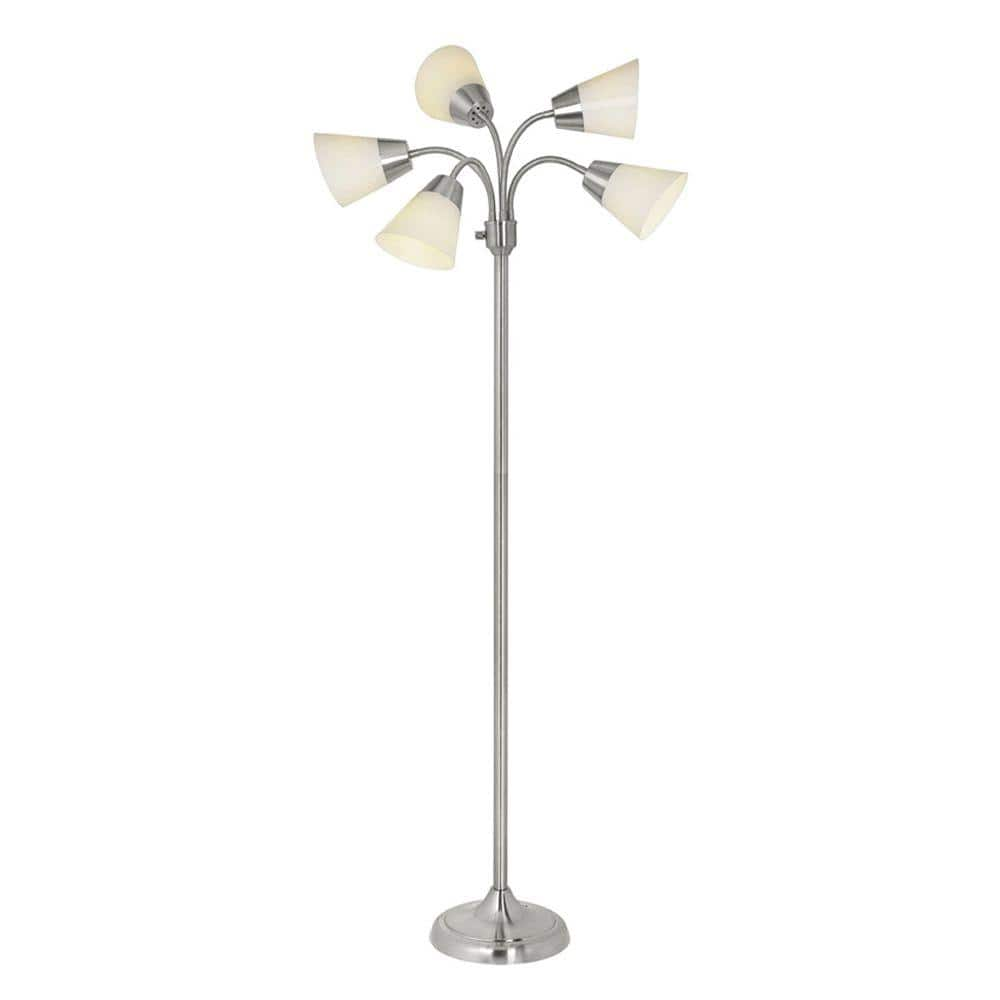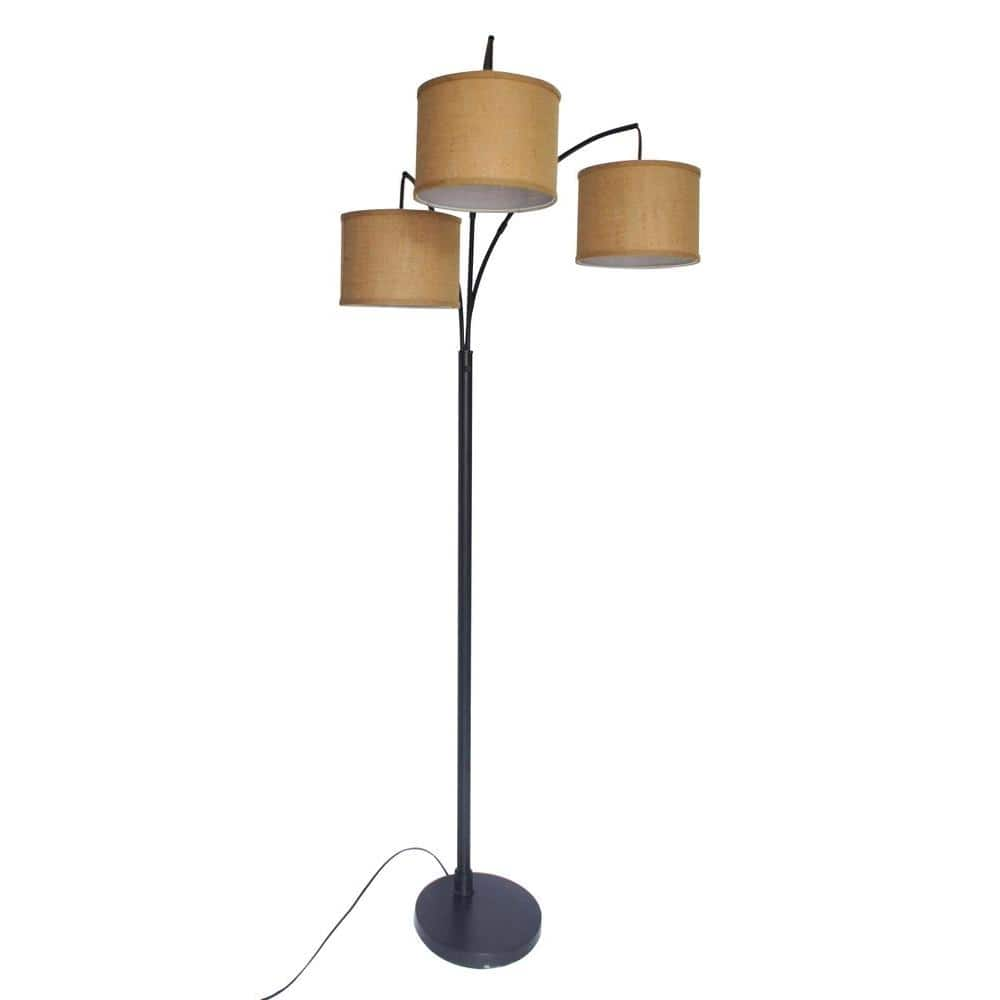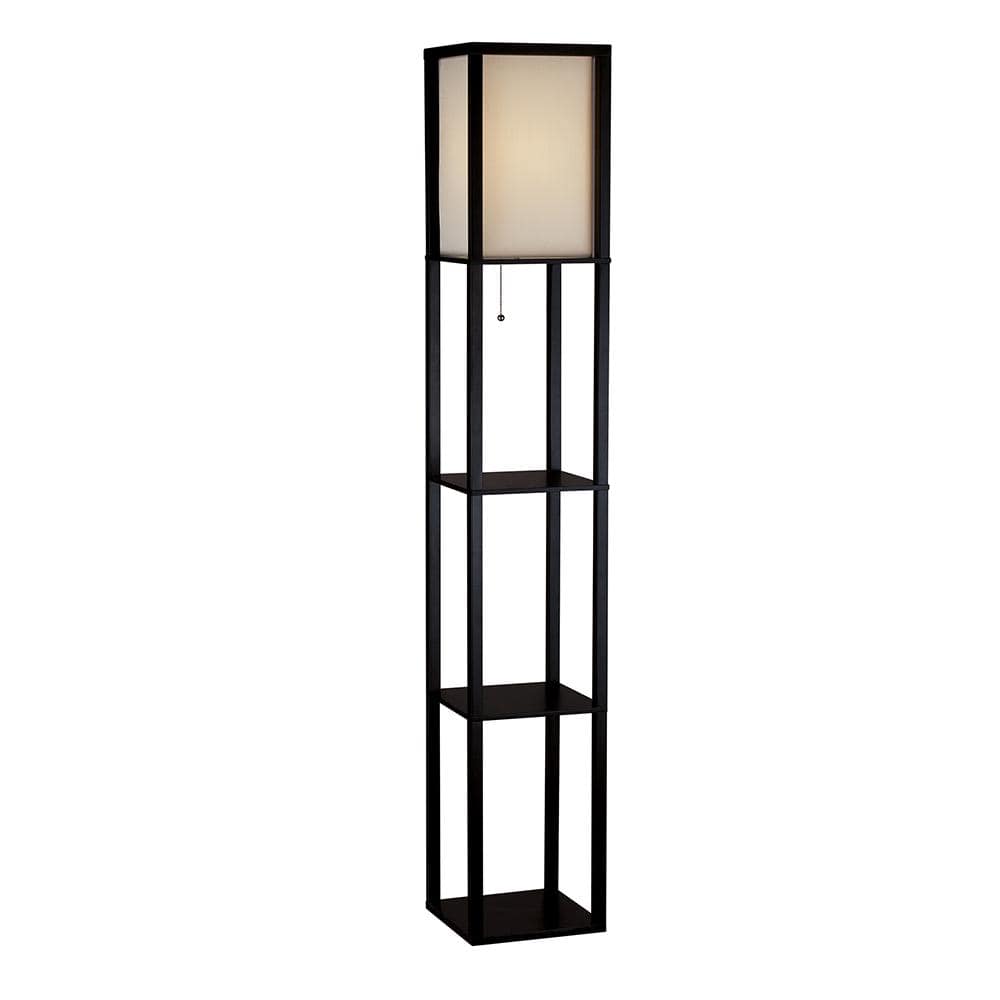Hubbell Lighting Hubbell Industrial 96 in. Six-Blade Indoor/Outdoor Nickel Dual Mount Ceiling Fan with Wall Control
Industrial indoor/outdoor dual mount ceiling fan. Nickel finish with color-matched blades. Measures 96 In. diameter x 15-3/4 In. height.
Beautiful and expansive in design, the 96 in. Hubbell Industrial ceiling fan is ideal for use in large areas and outdoor covered areas for maximum cooling. Finished in Nickel and with color-matched blades. This fan featuring an energy efficient 6-speed reversible DC motor. Damp location listed for covered outdoor areas. A full function wall control.
- Run silent DC motor technology
- Energy efficient DC motor with 6 speeds
- 6 blades with nickel finish
- A wall control is included – controls the fan speed capabilities
- Indoor / outdoor rated
- High speed energy information: 69 RPM
- As a rule of thumb, lighting experts suggest this fan is ideal in a room size that is larger than 400-square feet
- Suitable for modern or urban industrial design styles
- A 3/4 in. x 6 in. down rod is included, longer accessory down rods can be ordered separately
- Concealed screws and hardware for added beauty and styling
- Dual mount installation (standard flat ceiling or angled ceiling)
- Suitable for damp locations
- Mounting hardware is included
- Limited lifetime warranty
Additional information
| Dimensions | H 15.74 in, W 96 in, D 96 in |
|---|---|
| Downrod Length (in.) | 6 |
| Fan Blade Length (in.) | 43.13 |
| Fan Blade Span (in.) | 96 |
| Fan Blade Width (in.) | 3.94 |
| Certifications and Listings | UL Listed |
| Manufacturer Warranty | Limited lifetime warranty |
96 or ninety-six may refer to:
- 96 (number)
- one of the years 96 BC, AD 96, 1996, 2096, etc.
A blade is the sharp, cutting portion of a tool, weapon, or machine, specifically designed to puncture, chop, slice, or scrape surfaces or materials. Blades are typically made from materials that are harder than those they are intended to cut. This includes early examples made from flaked stones like flint or obsidian, evolving through the ages into metal forms like copper, bronze, and iron, and culminating in modern versions made from steel or ceramics. Serving as one of humanity's oldest tools, blades continue to have wide-ranging applications, including in combat, cooking, and various other everyday and specialized tasks.
Blades function by concentrating force at the cutting edge. Design variations, such as serrated edges found on bread knives and saws, serve to enhance this force concentration, adapting blades for specific functions and materials. Blades thus hold a significant place both historically and in contemporary society, reflecting an evolution in material technology and utility.
A ceiling is an overhead interior roof that covers the upper limits of a room. It is not generally considered a structural element, but a finished surface concealing the underside of the roof structure or the floor of a story above. Ceilings can be decorated to taste, and there are many examples of frescoes and artwork on ceilings, especially within religious buildings. A ceiling can also be the upper limit of a tunnel.
The most common type of ceiling is the dropped ceiling, which is suspended from structural elements above. Panels of drywall are fastened either directly to the ceiling joists or to a few layers of moisture-proof plywood which are then attached to the joists. Pipework or ducts can be run in the gap above the ceiling, and insulation and fireproofing material can be placed here. Alternatively, ceilings may be spray painted instead, leaving the pipework and ducts exposed but painted, and using spray foam.
A subset of the dropped ceiling is the suspended ceiling, wherein a network of aluminum struts, as opposed to drywall, are attached to the joists, forming a series of rectangular spaces. Individual pieces of cardboard are then placed inside the bottom of those spaces so that the outer side of the cardboard, interspersed with aluminum rails, is seen as the ceiling from below. This makes it relatively easy to repair the pipes and insulation behind the ceiling, since all that is necessary is to lift off the cardboard, rather than digging through the drywall and then replacing it.
Other types of ceiling include the cathedral ceiling, the concave or barrel-shaped ceiling, the stretched ceiling and the coffered ceiling. Coving often links the ceiling to the surrounding walls. Ceilings can play a part in reducing fire hazard, and a system is available for rating the fire resistance of dropped ceilings.
Fan commonly refers to:
- Fan (machine), a machine for producing airflow, often used for cooling
- Hand fan, an implement held and waved by hand to move air for cooling
- Fan (person), short for fanatic; an enthusiast or supporter, especially with regard to entertainment
Fan, FAN or fans may also refer to:
Indoor(s) may refer to:
- the interior of a building
- Indoor environment, in building science, traditionally includes the study of indoor thermal environment, indoor acoustic environment, indoor light environment, and indoor air quality
- Built environment, the human-made environment that provides the setting for human activity
- Indoor athletics
- indoor games and sports
Lighting or illumination is the deliberate use of light to achieve practical or aesthetic effects. Lighting includes the use of both artificial light sources like lamps and light fixtures, as well as natural illumination by capturing daylight. Daylighting (using windows, skylights, or light shelves) is sometimes used as the main source of light during daytime in buildings. This can save energy in place of using artificial lighting, which represents a major component of energy consumption in buildings. Proper lighting can enhance task performance, improve the appearance of an area, or have positive psychological effects on occupants.
Indoor lighting is usually accomplished using light fixtures, and is a key part of interior design. Lighting can also be an intrinsic component of landscape projects.
Mount is often used as part of the name of specific mountains, e.g. Mount Everest.
Mount or Mounts may also refer to:
Nickel is a chemical element; it has symbol Ni and atomic number 28. It is a silvery-white lustrous metal with a slight golden tinge. Nickel is a hard and ductile transition metal. Pure nickel is chemically reactive, but large pieces are slow to react with air under standard conditions because a passivation layer of nickel oxide forms on the surface that prevents further corrosion. Even so, pure native nickel is found in Earth's crust only in tiny amounts, usually in ultramafic rocks, and in the interiors of larger nickel–iron meteorites that were not exposed to oxygen when outside Earth's atmosphere.
Meteoric nickel is found in combination with iron, a reflection of the origin of those elements as major end products of supernova nucleosynthesis. An iron–nickel mixture is thought to compose Earth's outer and inner cores.
Use of nickel (as natural meteoric nickel–iron alloy) has been traced as far back as 3500 BCE. Nickel was first isolated and classified as an element in 1751 by Axel Fredrik Cronstedt, who initially mistook the ore for a copper mineral, in the cobalt mines of Los, Hälsingland, Sweden. The element's name comes from a mischievous sprite of German miner mythology, Nickel (similar to Old Nick). Nickel minerals can be green, like copper ores, and were known as kupfernickel – Nickel's copper – because they produced no copper.
Although most nickel in the earth's crust exists as oxides, economically more important nickel ores are sulfides, especially pentlandite. Major production sites include the Sudbury region, Canada (which is thought to be of meteoric origin), New Caledonia in the Pacific, Western Australia, and Norilsk, Russia.
Nickel is one of four elements (the others are iron, cobalt, and gadolinium) that are ferromagnetic at about room temperature. Alnico permanent magnets based partly on nickel are of intermediate strength between iron-based permanent magnets and rare-earth magnets. The metal is used chiefly in alloys and corrosion-resistant plating.
About 68% of world production is used in stainless steel. A further 10% is used for nickel-based and copper-based alloys, 9% for plating, 7% for alloy steels, 3% in foundries, and 4% in other applications such as in rechargeable batteries, including those in electric vehicles (EVs). Nickel is widely used in coins, though nickel-plated objects sometimes provoke nickel allergy. As a compound, nickel has a number of niche chemical manufacturing uses, such as a catalyst for hydrogenation, cathodes for rechargeable batteries, pigments and metal surface treatments. Nickel is an essential nutrient for some microorganisms and plants that have enzymes with nickel as an active site.
Outdoor(s) may refer to:
- Wilderness
- Natural environment
- Outdoor cooking
- Outdoor education
- Outdoor equipment
- Outdoor fitness
- Outdoor literature
- Outdoor recreation
- Outdoor Channel, an American pay television channel focused on the outdoors
A wall is a structure and a surface that defines an area; carries a load; provides security, shelter, or soundproofing; or, is decorative. There are many kinds of walls, including:
- Border barriers between countries
- Brick walls
- Defensive walls in fortifications
- Permanent, solid fences
- Retaining walls, which hold back dirt, stone, water, or noise sound
- Stone walls
- Walls in buildings that form a fundamental part of the superstructure or separate interior rooms, sometimes for fire safety
- Glass walls in which the primary structure is made of glass; does not include openings within walls that have glass coverings as these are windows
- Walls that protect from oceans (seawalls) or rivers (levees)
With or WITH may refer to:
- With, a preposition in English
- Carl Johannes With (1877–1923), Danish doctor and arachnologist
- With (character), a character in D. N. Angel
- With (novel), a novel by Donald Harrington
- With (album), a 2014 album by TVXQ
- With (EP), a 2021 EP by Nam Woo-hyun






by Robert
Makes a huge difference in this scorching weather. Quiet and effective.
by Brad
The fans purpose is to gently move air in a shop not create typhoon speed winds. If more people would read the description this fan would have a higher star rating but unfortunately people see a big fan and think its supposed to be a huge wind producing thing. Great Product!!
by Ron
Very nice fan, easy assembly. It looks good and it moves a lot of air.
by Carol
De-stratifies nicely on the lower settings and generates a comfortable breeze on the highest. Ridiculously quiet at any speed. Note: Fan does not have to be wired to the remote wall control. Mine is hardwired and I control everything (on/off/direction) from the remote, which has it’s own battery and does not require 120v service.
by Larry
well I have had it up for 3 weeks and seems to be working fine. I am not real happy with the top speed being slower than I anticipated.
by Smith
Love the fan my only complaint is the control. It is blue tooth and even after changing the freq it still does not always start the fan on the first try.